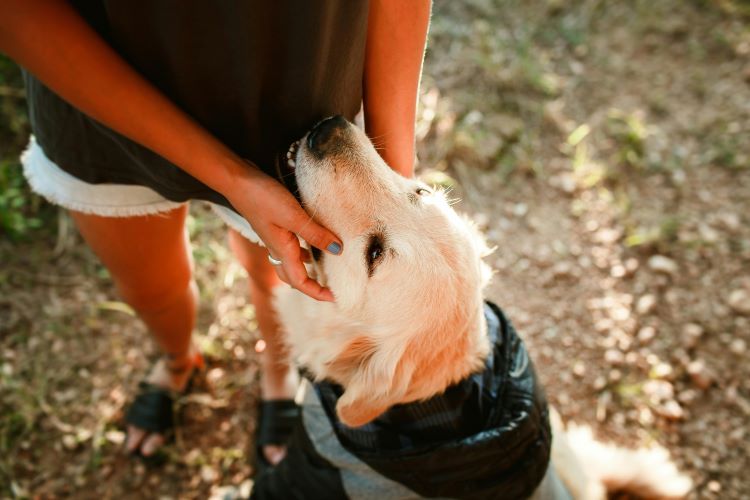Ready to help treat your pet to a healthy life?
Is My Pet Too Old for Pet Insurance? A Look at Age Limits & Lifetime Value
By : Brianna Gunter | Published Jun 26, 2025

You’ve heard of pet medical insurance — best known as pet insurance — and how it helps dogs and cats get the veterinary treatment they need. Perhaps you’ve also heard that the best time to get pet insurance is while pets are young. So, if you missed the cutoff and your pet is now a full-grown adult or even reaching their golden years, is it still worth getting coverage to protect them?
The truth is that there is an age cutoff for many pet insurance companies, meaning new dogs and cats can only be enrolled up to a certain age. Pets who are signed up before this age will, however, still be able to keep their coverage for the remainder of their life. So, when is your pet too old for pet insurance?
Age limits vary between insurance providers, so it’s important to compare pet insurance coverage details when considering which one to sign up with. With Trupanion, your pet is not too old for a new policy as long as they are under age 14. However, this doesn’t necessarily mean you should run to a different provider if you have a pet above this age — there are other things to consider first.
Why is there an age limit for pet insurance?
As disappointing as it can be to find out your dog or cat is too old for pet insurance, there’s a reason cutoff ages exist. Pet insurers have age cutoffs in order to ensure that all covered pets can get the most value out of their coverage. This is because older pets are typically more costly to protect, as they come with higher health risks and often have longer recovery times when they get sick or injured. Additionally, pet owners who sign up senior pets are unlikely to get as much value out of their coverage as they would with younger pets who have shorter health histories.
The best time to sign your pet up
As mentioned, the best time to sign your pet up for a new pet insurance policy is while they are still young. Ideally, this means when your pet is still a puppy or a kitten. The reason is simple: young pets are less likely to have pre-existing conditions (which pet insurers do not cover), so they’re likely to get the most value out of their coverage.
Now, this does not necessarily mean that an older pet cannot benefit from having pet insurance. On the contrary, pets of all ages can still develop new conditions or get into accidents. As long as these situations are not pre-existing and are not considered preventable, they can be eligible for coverage, preventing you from having to pay the full cost of a pricey, unexpected vet bill.
No age cutoffs doesn’t mean no age restrictions
Even among providers that don’t have an overall upper age limit, there may still be some age-based restrictions. For example, pets 15 and older can only be enrolled in an accident-only policy with Embrace rather than full coverage that includes illness. Lemonade meanwhile has different age cutoffs by breed — Labrador Retrievers age 10 or older cannot be enrolled, for instance. There may also be specific coverage restrictions to consider. And while Healthy Paws will enroll new pets up to age 14 like Trupanion, there is a catch — pets who are signed up at age six or older are not eligible for hip dysplasia coverage.
The good news is that with Trupanion, age limits are clear from the get-go. All dogs and cats up to age 14 can be enrolled for full coverage, regardless of breed.

Is it worth trying to insure older pets?
Ultimately, it’s up to you. Adult pets in general are worth protecting with pet insurance, especially if they still have a ways to go before hitting old age. As for pets who are in the double digits, though, it depends on their health risks and your current budget. If you are looking at pet insurance for an older dog or cat, it’s worth reviewing your policy options carefully while considering how much you are able to spend on a potential pet health emergency.
The thing is, even if a pet insurance company advertises no age restrictions, it still may not be worth signing up for a new policy if your dog or cat is age 14 or older. To start, one of the main factors in determining your coverage cost is your pet’s age. This means that, the older your pet is, the higher your premium is likely to be. Older pets are also more likely to have pre-existing conditions that are not eligible for coverage.
So, with all of this considered, you may actually be better off just handling vet expenses out of pocket for pets that are older than age 14 if you haven’t already signed them up for coverage. But if your pet is still under 14 and doesn’t have a long list of pre-existing conditions, they may still get good value out of having coverage for the rest of their golden years.
In addition to considering pet health insurance for your older pet, you can prioritize their health in other ways. Check out the best products for senior dogs and cats to help them live life to the fullest.
Coverage details for Healthy Paws, Embrace, and Lemonade based on written documentation from each companies’ public-facing websites and policy wordings as of June 18, 2025.
